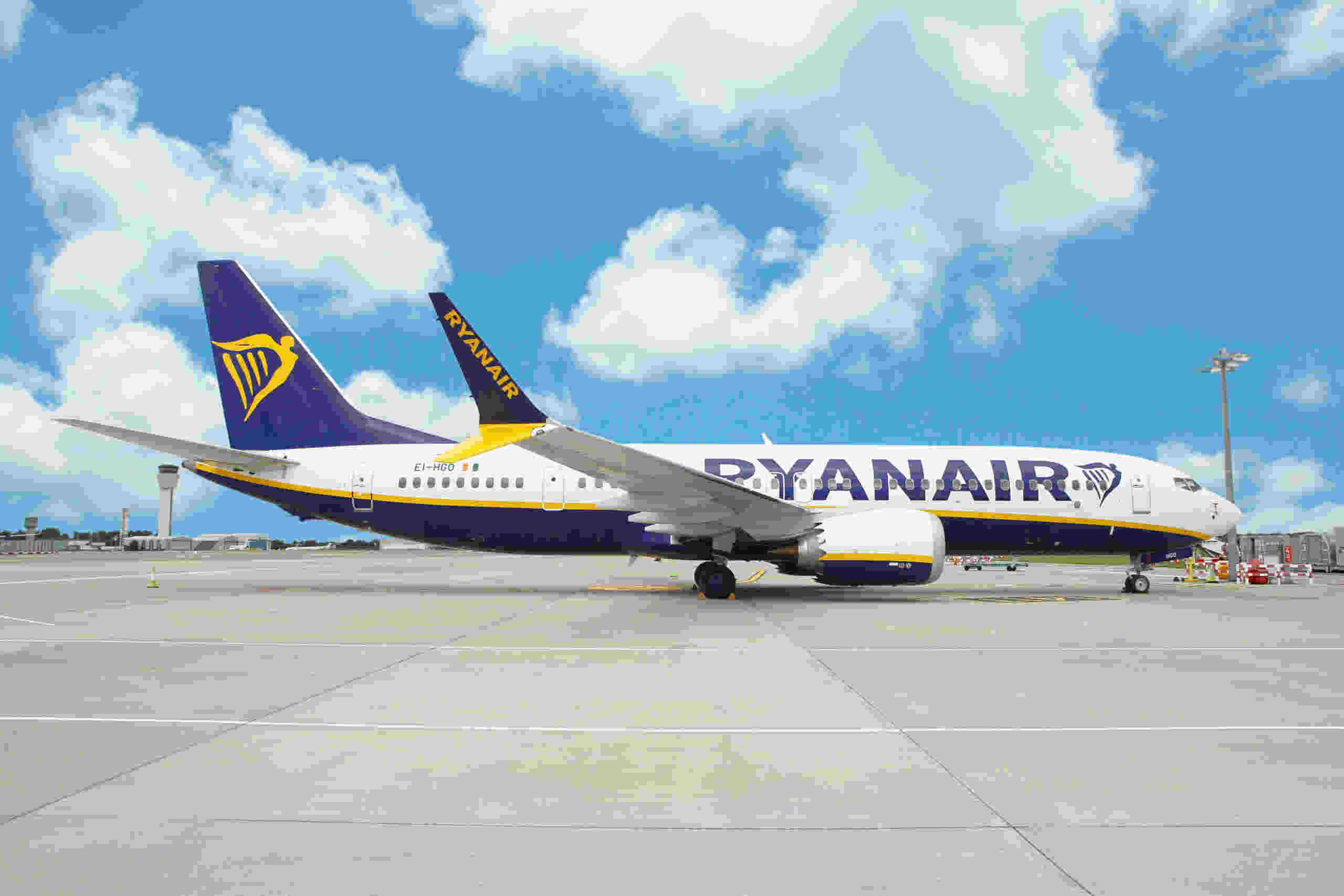≡-Here’s a New Travel Update: Ryanair Announces One Million Seat Reduction From Spanish Regional Airports for Winter 2025 Due to Rising Airport Charges and Limited Growth – Viral of Today
<> Viral of Today <>
Home » AIRLINE NEWS » Here’s a New Travel Update: Ryanair Announces One Million Seat Reduction From Spanish Regional Airports for Winter 2025 Due to Rising Airport Charges and Limited Growth Published on
August 29, 2025Ryanair has revealed a planned cut of one million seats across its winter 2025 schedule serving regional airports in Spain, a move linked to soaring airport charges and scant growth prospects in those markets. Charges levied by Aena, Spain’s monopoly airport operator, have surged, inflating the airline’s fixed operating costs and eroding the margin needed to support its low-cost proposition. In response, the carrier will trim frequencies at regional sites, reallocating capacity to higher-yield, higher-demand routes where financial viability is assured, thus safeguarding both profitability and operational integrity in a contracting operating environment.Ryanair, Europe’s leading low-cost airline, has announced significant cuts to its flight operations, affecting one million seats on routes to and from regional airports in Spain during the winter of 2025. This move is a direct result of escalating airport fees introduced by Aena, the state-run operator of Spain’s airports. The increased fees are expected to drive up operational costs, limiting the growth potential of regional airports, and ultimately forcing Ryanair to scale back its services.The Impact of Rising Airport FeesAena’s decision to increase airport fees by 6.5% for 2026 has had a major impact on airlines operating in Spain. The fee hike, which raises the cost per passenger to €11.03, comes at a time when many regional airports are already under strain due to the limited growth capacity. Ryanair, known for its cost-effective, low-fare model, has long been vocal about the negative implications of rising airport fees. The airline has warned that these increased costs could hinder the growth of Spain’s regional airports and lead to underutilized capacity.In a statement, Ryanair pointed out that the new fees would disproportionately affect smaller airports, which are already struggling to compete with the larger, more profitable hubs like Madrid and Barcelona. As a result, Ryanair has chosen to cut one million seats for the winter season, primarily impacting regional routes. This decision reflects the airline’s ongoing efforts to maintain profitability while keeping costs low for its passengers.Capacity Cuts and Regional AirportsThe cuts will have a noticeable effect on medium and small airports across Spain, with several destinations likely to see reduced flight options. Ryanair has yet to specify which airports will be most affected, but regional hubs such as Valencia, Santiago de Compostela, and Zaragoza could face significant reductions in service. These airports have become increasingly popular with budget travelers, offering more affordable flight options to and from Spain.The decision to reduce capacity is also a reflection of Ryanair’s broader strategy to optimize its network and streamline operations. While larger airports may see a reduction in the number of flights, the airline is likely to concentrate its efforts on high-demand routes with the highest profitability. Smaller, less-trafficked regional airports may be left with fewer flight options, making it more difficult for travelers to reach certain destinations.Ryanair’s Focus on Profitability and EfficiencyRyanair has long been known for its ability to offer low-cost flights while maintaining high operational efficiency. The airline has continually adapted to changing market conditions, from fluctuations in fuel prices to the introduction of additional ancillary charges. The reduction in capacity is part of the airline’s broader approach to managing operational costs without sacrificing its core value of offering affordable travel.Despite the cuts, Ryanair remains focused on retaining its competitive edge in the low-cost travel sector. The airline is likely to focus more heavily on profitable routes, while scaling back on those that are less economically viable. By doing so, Ryanair hopes to protect its bottom line while ensuring that it continues to provide affordable options for travelers.The Impact on PassengersFor passengers, the reduction in available flights to regional airports could lead to several challenges. Travelers who had been planning winter trips to Spanish destinations served by regional airports may face fewer flight options, higher prices, and potential route cancellations. These cuts could make it more difficult for passengers to travel to certain areas, forcing them to seek alternative carriers or make longer journeys from larger airports.Last-minute travelers may be hit particularly hard, as limited seat availability on remaining flights could drive up ticket prices. Ryanair’s focus on profitable routes means that last-minute bookings, which tend to be more expensive, could become even more costly for passengers.Additionally, passengers traveling to smaller regional airports may find themselves facing longer travel times, as they may need to transfer to larger airports before reaching their final destinations. This shift could also have broader implications for local economies, as many regional airports rely on passenger traffic to fuel their tourism and hospitality industries.Ryanair’s Baggage Policy ChangesAlongside the reduction in flight capacity, Ryanair has also announced plans to tighten its baggage policies. The airline will increase bonuses for gate staff who successfully intercept oversized luggage, aiming to enforce stricter baggage rules. Starting in November, Ryanair will raise the incentive paid to gate staff from €1.50 to €2.50 per bag for every passenger caught with oversized luggage.This change is part of Ryanair’s broader strategy to increase ancillary revenue, which plays a significant role in maintaining its low-cost business model. Passengers traveling with oversized bags, especially those attempting to bypass the rules, will face stricter enforcement. The airline has previously stated that around 200,000 passengers per year are charged luggage fees at airport gates, highlighting the growing importance of these additional charges to Ryanair’s profitability.Looking Ahead: What This Means for Ryanair’s FutureRyanair’s decision to cut one million seats for the winter season reflects the airline’s ongoing efforts to adapt to rising operational costs while maintaining its reputation for low-cost travel. The airline’s ability to scale back on less profitable routes and concentrate on high-demand markets will likely play a key role in ensuring its continued success.However, the cuts could also signal a shift in the airline’s focus toward optimizing existing operations rather than expanding into new markets. This strategy could lead to more streamlined operations, but it could also limit Ryanair’s growth potential in certain regions, particularly those served by smaller regional airports in Spain.As Ryanair moves forward, passengers can expect continued changes to its flight offerings, baggage policies, and pricing strategies. The airline’s commitment to offering affordable travel will remain central to its business model, but passengers may need to adjust their expectations as Ryanair makes adjustments to navigate rising airport charges and other operational challenges.Ryanair has confirmed it will retract one million tickets from its winter 2025 schedule at Spanish regional airports, a deliberate response to climbing airport charges and constrained expansion at smaller terminals. The disclosure follows a pattern among European low-cost carriers facing higher fixed and variable costs, with the airline limiting capacity at affected airports to safeguard the low-cost model defended in Madrid by its executives amid recent disputes with the state airport company Aena, which has introduced price increases.The output of one million fewer seats represents a deliberate pruning of marginal routes, a tactical measure to preserve unit cost discipline and protect the carrier’s operating margin. While such capacity discipline favours the airline’s profitability, it does expose leisure and visiting friends and relatives (VFR) traffic to limited competitive substitutes, elevated fares, and extended ground-access costs. Ryanair’s belt-tightening decision underscores a structural reconfiguration of the European low-cost competitive landscape, characterised by slowly eroding yield management flexibility. Affected travellers should adopt a proactive approach to journey planning, reassessing connection windows and alternative airports, in order to mitigate the risk of cascading operational disruptions and to optimise itinerary integrity.
This information will surprise you!
See also
- Read until the end to discover everything.
- Important information you need to know.
- Interesting facts and helpful tips.
Conclusion
Did you enjoy the news? Keep following us daily!













